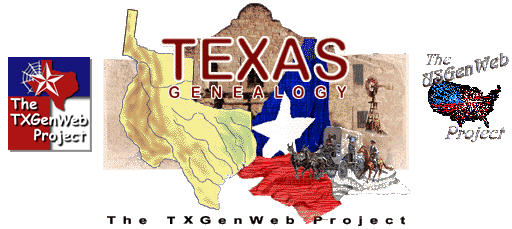|
|
TRINITY COUNTY HISTORIES
Links in this History are from "Handbook of Texas Online"-Trinity County, Texas
Trinity County is located deep in the heart of the piney woods of east Texas. Our county is bordered by two rivers. The Neches flows along the north boundary and the Trinity on the south boundary. Besides the Davy Crockett National Forest, there is a multitude of deep running creeks, and forests. Originally, the almost impassible Big Thicket extended into Trinity County. The lay of the land did not stop our forefathers, because there is an ebb and flow of early family history into and returning from surrounding counties. Hewers of lumber and cattlemen tended to migrate to Trinity County because of it's abundance of natural resources.
In the early and mid-1820s, after the overthrow of Spanish rule, the area, now known as Trinity County, fell under the Mexican ruled town of Nacogdoches. The Mexican government in 1827 granted to Joseph Vehlins, in exchange for settling 200 families in the area. Afterwards, several grants were made from the Vehlein Grant. After the Texas Revolution, the Texas Republic's Congress established Houston County, which included Trinity County (1837). The Northern Division of Liberty County was established February 5, 1840 by the Republic of Texas, and included Trinity, most of Polk, and eastern San Jacinto counties. The next year, by an Act of the Republic of Texas, December 7, 1841, gave the name of Trinity to the Northern District of Liberty. In this act, "The County of Trinity shall be entitled to all the privileges of other counties in the Republic, except that of separate representation in the national Congress of the Republic." Another portion of present day Trinity County was included in the establishment of Hamilton County, February 2, 1842. It included the north half of what is now Walker County, the east portion of Madison County, and parts of Houston, Trinity, and Polk counties; Cincinnati was made the county seat. All these counties were for judicial purposes only and were abolished by the Republic of Texas Supreme Court decision, Stockton v. Montgomery (Spring Session 1842), which declared judicial counties unconstitutional, principally because the Constitution of 1836 specified that each county was entitled to at least one member in the House of Representatives. Some time after 1842, the area that became present Trinity County became part of Houston County, though it is not clear if that included all of present day Trinity County. While still part of Houston County, a group of men planned separation. A petition was sent to the Legislature on December 26, 1849 requesting Polk County privileges. Instead, an Act of the Texas State Legislature, February 11, 1850, carved from Houston County a new county to be named Trinity. Later, parts of the Trinity County, boundaries were adjusted by acts of the Legislature. A portion was attached to Walker County by an act approved January 29, 1858 and later, another part was attached to Polk County by an act of the Legislature approved March 11, 1875.
More History Links for Trinity County
Courthouse Architectural
Description
History of Trinity County Courthouses and County Seats
History of Trinity (Trinity (City) written in 1930s)
A History of Groveton, Texas, Carl A Brannon (1942)
W B T & S Manuscript, Bill Dixon 2008
A History of Trinity County, Adele Mansell Thesis 1941
Early Settlers, Joseph Hensley
Updated Sept2023/skw
